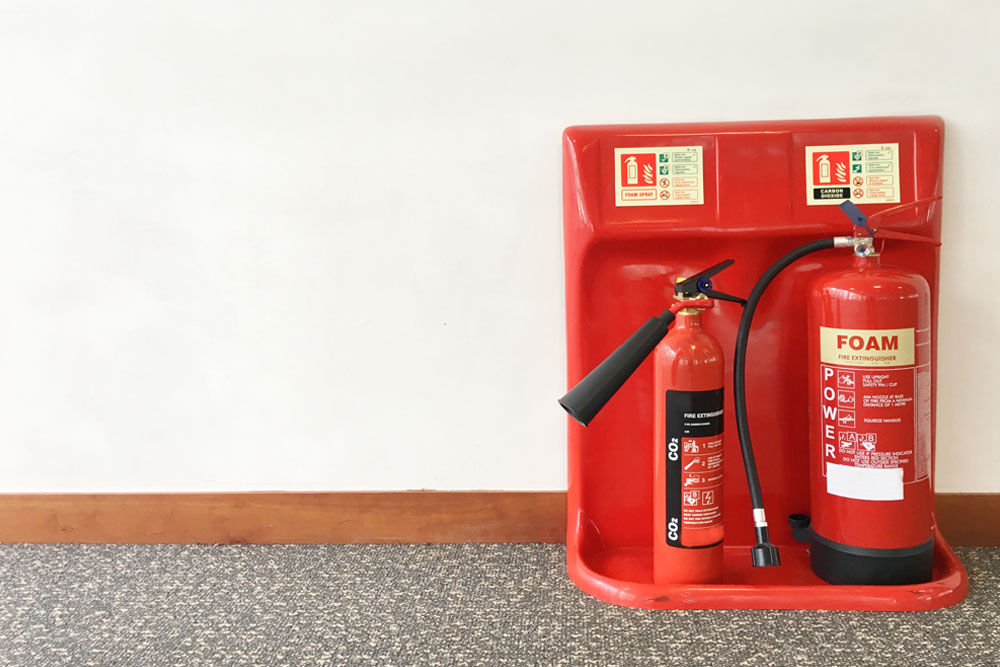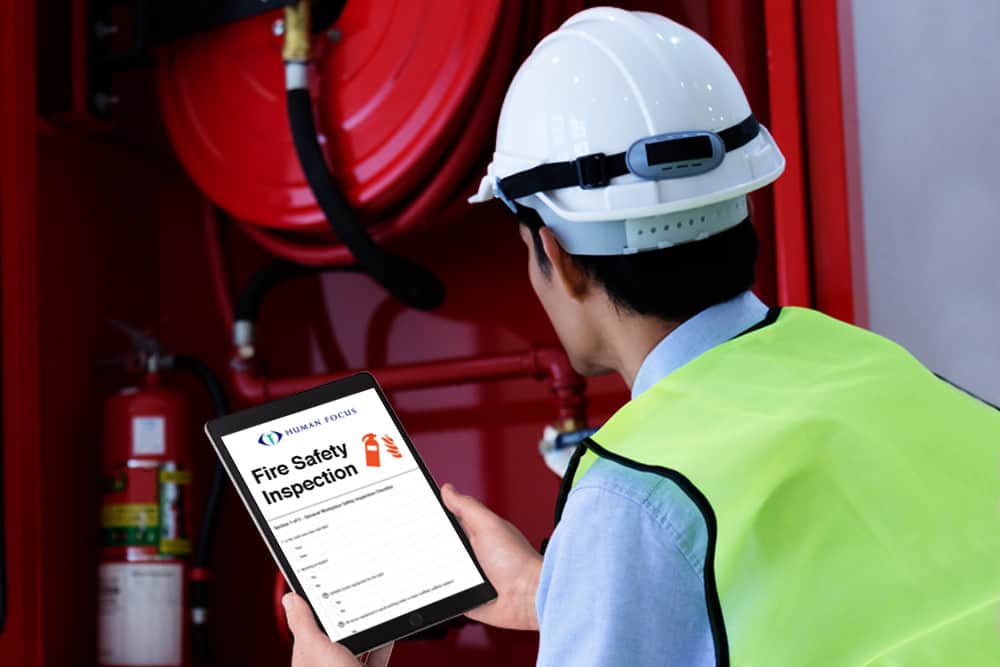
Employers and owners of shared residential buildings must put in place and maintain fire safety measures under the Regulatory Reform (Fire Safety) Order 2005 (FSO).
But “fire safety” is a broad term. It covers fire protection, prevention and suppression measures, meaning you need a balance of all three to comply with the FSO. So, understanding each strand of fire safety and how they interact is essential for duty holders.
This guide explains the difference between fire protection, prevention and suppression and how a combination of all three makes a building fire-safe.
Key Takeaways
- Fire prevention measures stop a fire from starting.
- Fire protection measures limit the harm fire can cause people or property.
- Fire suppression measures put fires out.
- Effective fire safety requires a combination of fire prevention, protection and suppression.
- Regular fire risk assessments are essential to ensure all necessary precautions are in place and working.
What the Law Says
The Regulatory Reform (Fire Safety) Order 2005 applies to all workplaces and common parts of buildings containing two or more residences.
It sets out what “responsible persons” (employers for workplaces, landlords or building owners for residential properties) must do to manage fire risks.
The overarching duty is to “take such general fire precautions” to ensure the people and premises under your care are safe.
General fire precautions cover measures to:
- Reduce the risk of fires starting
- Reduce the risk of fires spreading
- Detect fires and alert people
- Ensure safe means of escape at all times
- Fight fires
Each of the listed “general fire precautions” relates to one of the three fire safety disciplines:
- Detecting fires and ensuring a safe means of escape is fire protection.
- Reducing the risk of fires starting and spreading is fire prevention.
- Having resources available to fight fires is fire suppression.
We’ve gone through the difference between fire protection, prevention and suppression in more detail below to help you understand the distinctions and implement the right measures for your premises.
What is Fire Prevention?
Fire prevention describes measures that stop a fire from starting.
In practice, this means eliminating or managing fire hazards – the things in your workplace that could ignite or fuel a fire.
Common sources of ignition include:
- Electrical equipment
- Naked flames or sparks generated by equipment
- Heaters
Common sources of fuel include:
- Paper
- Wood
- Plastic
So, successful fire prevention is managing sources of ignition and fuel to minimise the chance of a fire starting.
Eliminating fire hazards is always preferred – fires can’t start without heat or burn without fuel – but it would be unrealistic to remove every fire hazard from your workplace. So, the next best solution is keeping ignition sources separate from fuel sources.
Equipment maintenance and electrical safety can also count as fire prevention. Regular servicing and portable appliance testing (PAT) can catch faulty equipment that might spark or short circuit.

What is Fire Protection?
If a fire does break out, fire protection measures limit its capacity to harm people and property. They can be categorised as either active or passive.
Fire Protection for People
Fire protection for people revolves around alerting them to the danger as early as possible and guaranteeing a safe escape.
A suitable fire detection system must be installed on your premises. These systems are examples of active fire protection, as they alert people to the threat of fire.
You also need to plan for evacuations and ensure there are enough safe escape routes for the size of your premises.
And don’t forget fire drills. They give occupants a chance to evacuate a building under controlled conditions, which helps prevent panic and confusion in a real emergency. They also give you an opportunity to road test plans.
Fire Protection for Property
Fire protection for property is mostly passive. Passive fire protection slows or stops a fire from spreading to protect escape routes and the structural integrity of a building.
As the name suggests, passive fire protection systems work round the clock without input from people (provided they’re correctly installed and regularly maintained).
Fire doors are the best-known example of passive fire protection. They stop the spread of smoke and flames during a fire breakout, preserving parts of the building and buying people time to escape.
Another good example of passive fire protection is fire stopping, which involves sealing gaps in a building to stop flames and smoke from spreading between areas.

What is Fire Suppression?
Fire suppression measures are used to extinguish fires.
Automatic sprinkler systems designed to snuff a fire out, such as chemical foam, count as fire suppression.
Fire extinguishers are another obvious example of fire suppression, but these have to be handled by trained personnel (unless it’s a life-or-death situation).

Practical Difference Between Fire Protection, Prevention and Suppression
Fire safety in the workplace requires a combination of fire prevention, protection and suppression because fire is a dynamic threat.
Prevention is always the goal, but it’s impractical (or really impossible) to eliminate every fire hazard from a workplace. So, fire risk is never zero, which means you need measures on hand to put fires out. But fires can spread rapidly and behave unpredictably, so escape routes have to be available to occupants at all times.
Different systems also complement each other. Fire doors limit the spread of flames, which keeps escape routes safe and accessible. Extinguishers need to be on hand for the same reason.
To ensure the right balance of fire protection, prevention and suppression in your workplace, you must complete a fire risk assessment.
A fire risk assessment is the process of identifying fire hazards, evaluating who might be harmed and how, and implementing necessary measures to keep people safe.
Under the FSO, all non-domestic premises need a current and detailed fire risk assessment. It’s up to the responsible person to carry out the assessment and review it as needed.
Fire Safety Training
Fire safety is a shared responsibility, and the right combination of fire prevention, protection and suppression measures is key to keeping your premises safe. Ensuring that everyone in your workplace is aware of fire hazards and how to manage them is essential for staying compliant and prepared.
Our online Fire Safety Courses provide practical, straightforward guidance on fire risk assessments, managing fire hazards and implementing the correct safety measures. These courses can help you meet your legal obligations under the Fire Safety Order and ensure your workplace is well-equipped to handle fire risks.
























































































































































































































































































































































































































































































































































































































































































































































